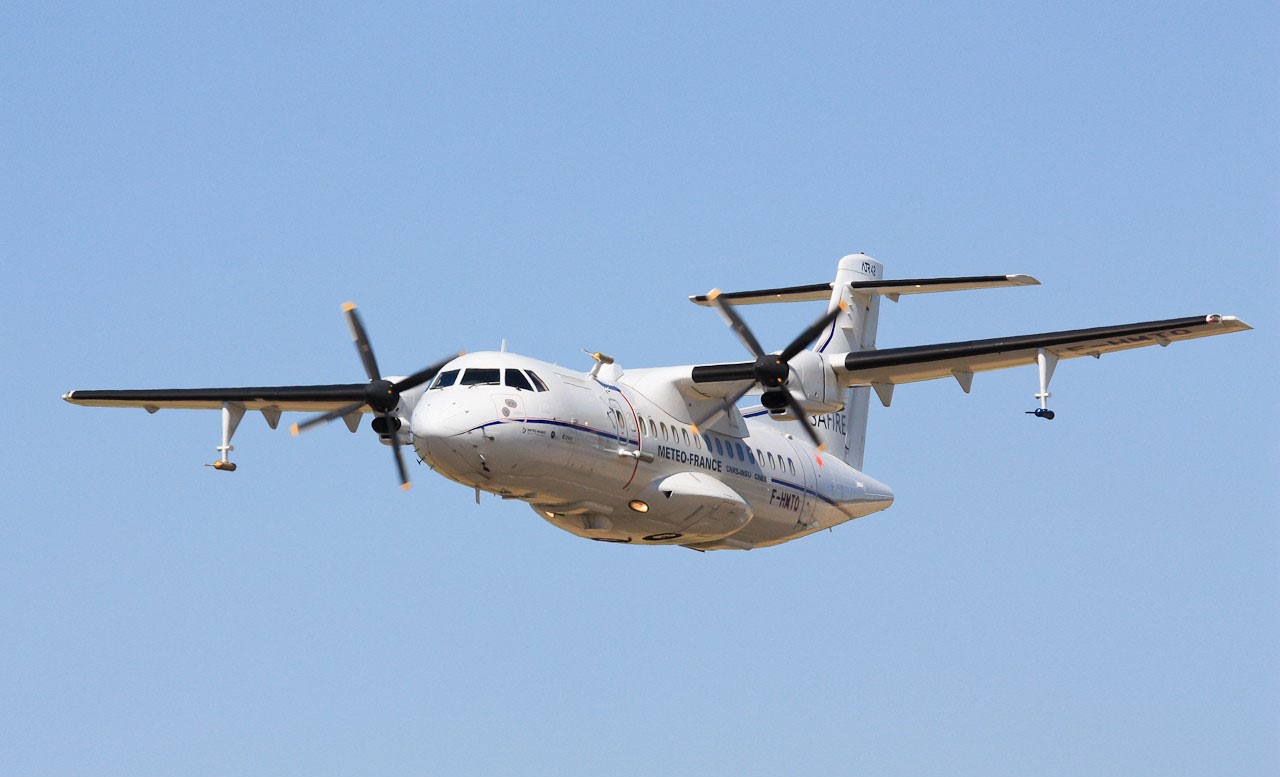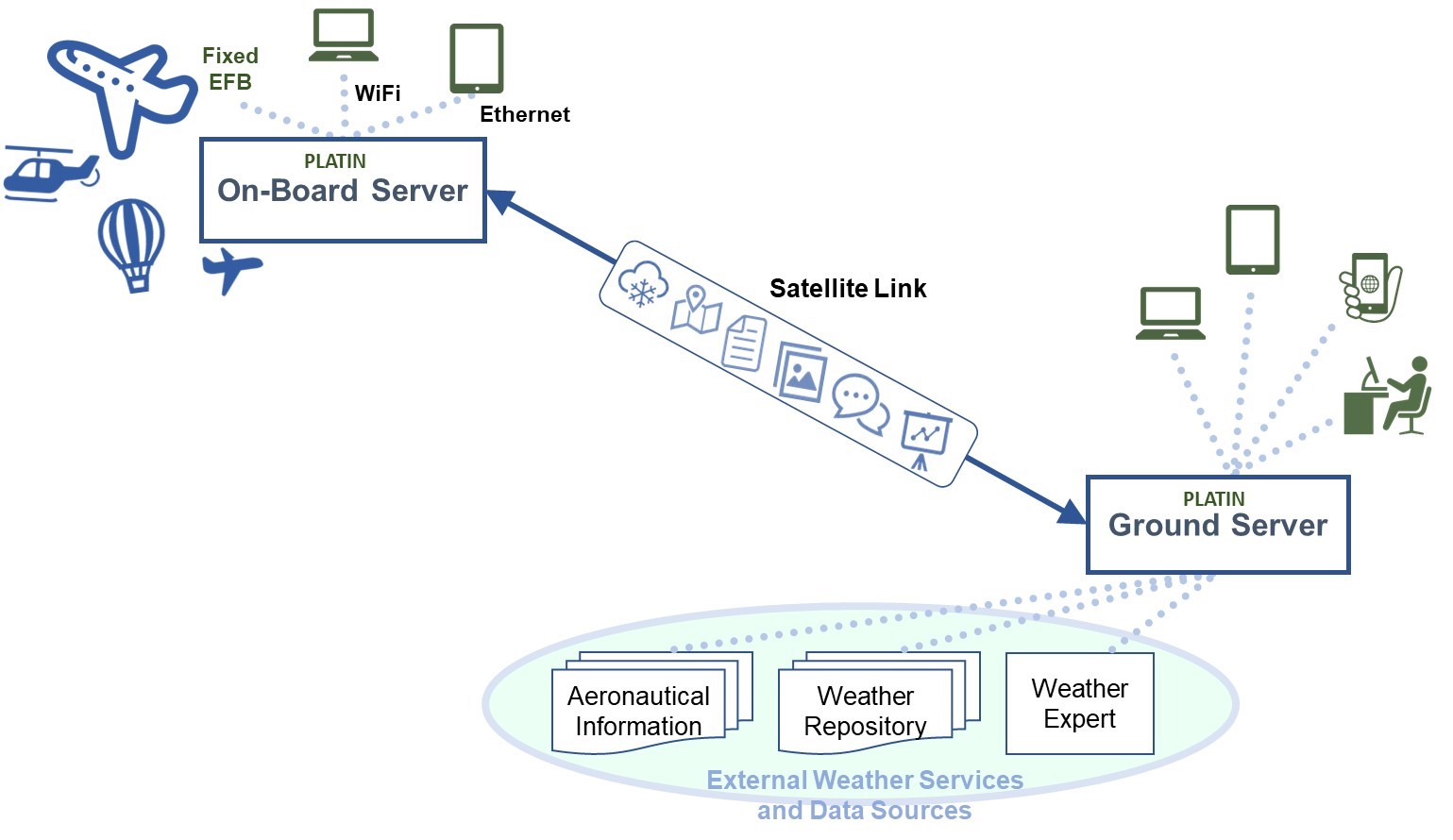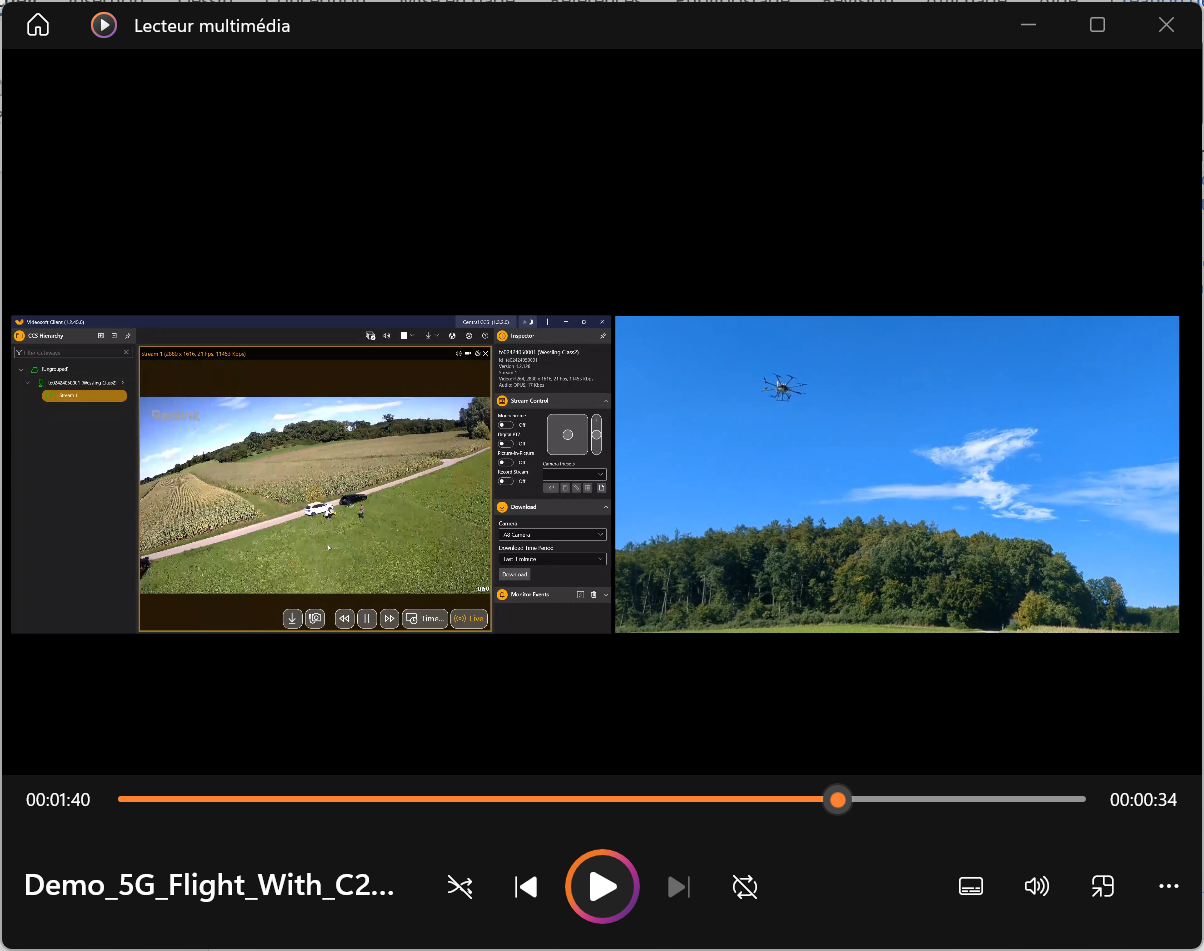Objectives of the service

ATR-42 aircraft from SAFIRE: French airborne science operator testing the PLATIN system
The objective of PLATIN service is to answer the real-time mission information exchange needs of aerial work operators. PLATIN service may be used to operate diverse platforms: aircraft, rotorcraft, UAV, balloon.
PLATIN is a major evolution of the already existing PLANET service. Thanks to new mobile satellite connectivity generation, PLATIN intends to provide cutting edge applicative services leveraging flight mission efficiency.
The innovative services and features offered by PLATIN include:
- New Applicative Services (video transmission, bulk telemetry)
- Improved Network Services (security, QoS)
- New Generation of Terminal Equipment (Iridium Certus integration)
- Improved Service Level, Usability, Operability and Maintainability
- Better alignment with Standards

PLATIN service overview
Users and their needs
The service developed in the frame of PLATIN project targets aerial work segment: aircraft manufacturers’ flight tests, science flights, surveillance flights, etc...
PLATIN aims at:
- Improving PLANET service for special flight operations with new features and better performances
- Providing a solution for UAV air-to-ground connectivity via SATCOM
Therefore, two partners have been selected for the pilot phase of the project:
- SAFIRE, a French airborne science operator, which will test the system on their fleet (ATR42, Falcon 20, Piper Aztec),
- QUANTUM, a German UAV manufacturer, which will embed PLATIN system on their UAV
While initial deployment targets European users, thanks to LEO satellite connectivity, worldwide markets can be now addressed.
Service/ system concept
The two main components of the system are the onboard segment and the ground segment.
The onboard segment is composed of a hardware server that either embed or interface with the Satcom. This server also hosts all the PLATIN application. The application is responsible for data acquisition (for instance, video streams from external cameras or telemetry from external instruments), data optimization (compression, priority) and transmission towards the ground segment.
The ground segment provides data storage and data presentation to ground users, as well as several APIs to allow third party applications to interconnect with PLATIN.
Both onboard and ground segments host a web interface that provide an HMI to users.

PLATIN system architecture
Space Added Value
There are several space technology elements involved in the solution. The most important one is satellite communication as means for data communication while in-flight. But other technologies are involved such as satellite navigation for carrier tracking and geo-location or satellite observation, as primary source for some weather nowcast products that are intensively transmitted during operations.
SATCOM plays a central role in the overall system architecture. This is the link between onboard and ground segments during flight phases. Satellite communication provides the unique capability to offer global in-flight connectivity.
Satellite Navigation is mandatory for carrier geo-location as tracking is the most important basic feature of PLATIN system.
Concerning Satellite Observation, this is one of the main sources of nowcast weather products transmitted during operations. Satellite imagery and all its derived products (RDT for Rapid Development Thunderstorm for instance) are often requested by users as a supporting feature to the mission.
Earth Observation data is one of the main sources of nowcast weather products transmitted during operations. Satellite imagery is often requested by users as a supporting feature to their missions.
Current Status
New Services Implementation
Following the Critical Design Review (CDR) held in January 2025, the development and verification of new service features supported in the frame of a contract extension has been performed in the first semester and concluded by a Factory Acceptance Test with the Agency. The project is now entering the pilot phase, involving end-users and business partners to assess the fitness for purpose of the new services. Technical, operational and business value will be evaluated during a 6-month pilot campaign.



